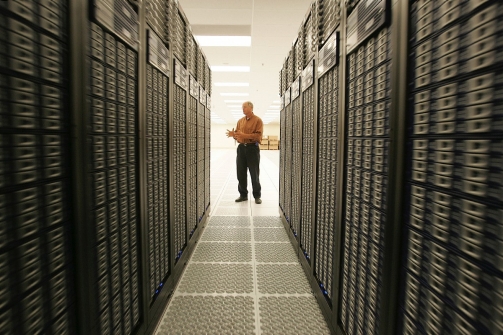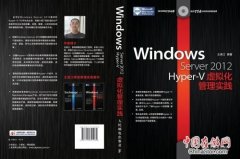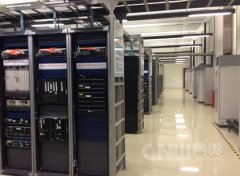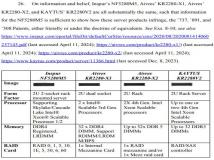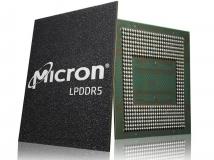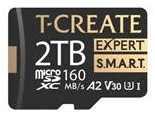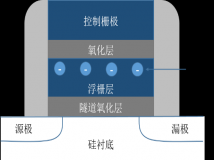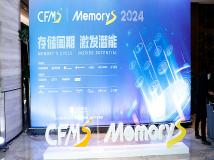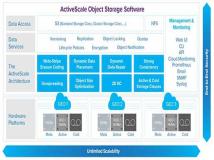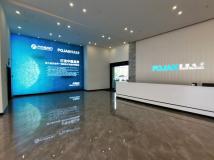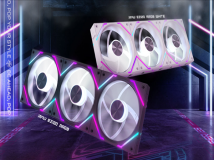劳伦斯利弗莫尔国家实验室(Lawrence Livermore National Laboratory)的科学家们正在加紧构建一台新的超级计算机,称为“红杉”(Sequoia),并且希望一旦在2012年底完成,它能成为世界上最强大的计算机。
As I reported recently in Newsweek, scientists at Lawrence Livermore National Laboratory are racing to build a new supercomputer, called Sequoia, that they hope will be the most powerful machine in the world once it’s completed by the end of 2012.正如我最近发表在《新闻周刊》上的报道,劳伦斯利弗莫尔国家实验室(Lawrence Livermore National Laboratory)的科学家们正在加紧构建一台新的超级计算机,称为“红杉”(Sequoia),并且希望一旦在2012年底完成,它能成为世界上最强大的计算机。
Meanwhile, another team at Oak Ridge National Laboratory has announced plans to build a machine of comparable power.与此同时,橡树岭国家实验室(Oak Ridge National Laboratory)的另一个团队宣布了构建有类似功能计算机的计划。
And yet another team at the National Center for Supercomputing Applications at the University of Illinois is assembling a supercomputer that will be not quite as mighty but will still rank among the most powerful machines in the world.而伊利诺伊大学 (University of Illinois) 国家超级电脑应用中心(NCSA)的另一个团队正在组装一台超级计算机,虽然其功能没有那么强大,但是仍然会跻身于世界最强大计算机之列。
But there’s one big thing missing, according to people in the supercomputing community—we need more people who know how to make use of all this computing power. “It’s not enough to keep building powerful supercomputers unless we have the brains,” says Stan Ahalt, a 20-year supercomputing veteran and the director of a supercomputing center with its headquarters at the University of North Carolina at Chapel Hill. “Think of a supercomputer as a very fast racing engine. We need more drivers to use those engines.”然而,据超级计算机社区的人说,还缺少一个大部件——我们需要更多懂得如何应用所有这些计算功能的人。“只是不断构建强大的超级计算机还不行,我们还要拥有这些优秀人才”。斯坦·阿豪特(Stan Ahalt)说。他有20年研发超级计算机的经验,是总部位于教堂山(Chapel Hill)北卡罗莱纳大学超级计算机中心主任。“把超级计算机想像为非常快的赛车引擎,而我们需要更多操纵那些引擎的司机。”
Supercomputers are used in a wide range of applications, from climate modeling to designing airplanes. They are far more complex than ordinary laptops and desktop computers. Some use hundreds of thousands of microprocessors. Writing software programs that can split work up among all those microprocessors is a daunting task and requires lots of specialized training, way beyond what the average computer science student gets.从气候模型到设计飞机,超级计算机的应用范围极为广泛。它们远比普通的笔记本或台式计算机复杂。有些超级计算机使用了数十万个微处理器。编写能够在所有那些微处理器中分别工作的软件程序是令人望而生畏的工作,需要大量的专业培训,那是远远超过普通计算机科学学生所获得的培训。
The Blue Gene supercomputer at Lawrence Livermore National Laboratory in California., Frederic Larson, The San Francisco Chronicle / Corbis
加利福尼亚劳伦斯利弗莫尔国家实验室蓝色基因(Blue Gene)超级计算机。《旧金山纪事报》弗罗德里克·拉森/考比斯
Scientists refer to the talent shortage as the “missing middle,” meaning there are enough specialists to run the handful of world-beating supercomputers that cost a few hundred million dollars, and plenty of people who can manage ordinary personal computers and server computer—but there are not nearly enough people who know how to use the small and mid-sized high-performance machines that cost anywhere from $1 million to $10 million.科学家把这种人才短缺称为“缺失中间人”(missing middle)。意思是说,我们有足够运行价值数亿美元为数不多一流超级计算机的专家,也有大批能够管理普通个人电脑和服务器计算机的人——但是知道如何使用价值在1百万至1千万美元之间的那些中小型高性能计算机的人才远远不够。
Those small and mid-sized machines have huge potential to help companies. In health care, for example, supercomputers could let scientists sift through mountains of data about patient populations to determine which treatments work and which ones don’t. Supercomputers could play a key role in genomics research that could let pharmaceutical companies develop drugs tailored to individual patients.那些中小型计算机具有帮助企业的巨大潜能。例如,医疗保健——超级计算机能够让科学家通过研究有关患者人数的大量数据资料来确定哪种疗法起作用,哪些疗法不起作用。超级计算机在基因级研究中能够起到重要作用,能够帮助制药公司针对患者个体开发药物。
To get there, however, we need to start training more students. “It’s not that we’ve had a drop-off in enrollments, it’s that we need an increase,” says Jack Dongarra, a supercomputer specialist at the University of Tennessee. “We need people who can build the applications and algorithms needed to effectively use the equipment.”然而,要做到这一点,我们需要开始培训更多的学生。“这并不是说我们培训的人数下降,而是说我们需要增加培训的人数。”田纳西大学(University of Tennessee)超级计算机专家杰克·唐加拉(Jack Dongarra)说,“我们需要能够构建有效使用这种设备所需的应用程序和算法的人才。”
Wu Feng, a professor of supercomputing at Virginia Polytechnic whose work focuses on small and mid-sized supercomputers, says companies are so hungry for talent that “I’ve even had different parts of a single company vying for my students. They’re in high demand.”弗吉尼亚理工大学(Virginia Polytechnic)超级计算机教授吴风(音)主要致力于中小型超级计算机研发工作。他说,各家公司对人才的需求如此迫切,“甚至曾经有一家公司的不同部门在争夺我的学生。他们供不应求。”
Feng has 15 graduate students, most of them from other countries. That’s another issue. Ahalt says in the past, U.S. supercomputing centers could attract top students from around the world, train them and keep them here.吴风有15名研究生,他们大都来自其他国家。这又是一个问题。阿豪特说,过去,美国超级计算机中心可以吸引世界各地的顶尖学生,培训之后把他们留下来。
But now many students leave the U.S. after getting their education because there are better opportunities in countries like India and China. And the U.S. is not training enough American students to fill the gap.而今,许多学生完成学业后就离开美国,因为在印度和中国这样的国家有更好的机遇。而美国并没有培训足够的美国学生来填补这个空白。
“We need to attract more young people to come into this very arcane field,” Ahalt says. “We need a new generation of scientists and engineers who know how to use supercomputers to solve complex engineering and science problems.”阿豪特表示,“我们需要吸引更多的年轻人进入这个非常晦涩的领域。我们需要知道如何利用超级计算机解决复杂工程和科学难题的新一代科学家和工程师。”
One attempt to address the shortage is the Virtual School for Computational Science and Engineering, a program that offers online courses for graduate students who want to learn how to use high-performance computers.开办计算机科学与工程虚拟学校是解决人才短缺问题的一个尝试,那是为希望学习如何使用高性能计算机的研究生提供在线课程的计划。
This year 1,000 students participated, up from 40 in 2008 when the program began, says Thom Dunning, director of the National Center for Supercomputing Applications (NCSA) at the University of Illinois at Urbana-Champaign.托姆·邓宁(Thom Dunning)是伊利诺伊大学香槟分校(University of Illinois at Urbana-Champaign)国家超级计算应用中心主任。据他透露,今年参加学习的学生有1000人,而2008年计划开始时参加学习的人数只有40人。
“This is really encouraging,” Dunning says. “We have a younger generation that’s willing to roll up its sleeves and learn how to program these big beasts.”邓宁表示,“这真是令人鼓舞。我们有了愿意开始学习如何为这些大家伙编写程序的年轻一代。”
另一项措施是组建由国家超级计算应用中心等单位支持的联盟,旨在让较小的公司利用高性能计算机设计出更好产品。国家超级计算应用中心将允许小公司使用其超级计算机,同时培训那些公司的内部人员编写可以在高性能计算机上运行的程序。Another step is a consortium sponsored by NCSA and others whose goal is to get smaller companies using high-performance computers to design better products. NCSA will let small companies use its supercomputers, and will train people inside those companies to write programs to run on high-performance computers.
“We want to step outside this small group of very skilled experts, and build a broader class of people who can use this very specialized capability,” Dunning says.“我们希望跳出这个非常需要技能的专家小圈子,组成能够利用这个非常特别能力的庞大阶层。”邓宁说。
If we don’t, Ahalt says, we risk falling behind rivals. China, for example, has recognized that high-performance computing creates economic advantages and is training huge numbers of scientists and engineers to use the machines.阿豪特说,如果我们做不到,就有可能落后于对手。例如,中国已经认识到高性能计算能够创造经济优势,并且正在大量培训使用这些超级计算机的科学家和工程师。
“China already owns the market for low-end manufacturing, and with supercomputer expertise they will increasingly move into high-end manufacturing,” Ahalt says.阿豪特说,“中国已经拥有了低端制造业市场,他们将利用超级计算机的专业知识逐渐进入高端制造业市场。”
Falling behind in computing could mean falling behind in fields that rely on computation to get an edge on rivals. “What if we lose companies like Boeing, GE, Westinghouse, and IBM, as employers in the U.S.?” Ahalt says.在计算上落后有可能意味着在依靠计算获得竞争优势的领域落后。“如果我们失去波音、通用、西屋和IBM那样的公司,像美国的雇主那样,会怎么样?”阿豪特问。
Today that seems unthinkable. Ahalt and his peers in the supercomputer community are hoping it stays that way.今天看来,那似乎不可思议。阿豪特和他在超级计算机社区的同事们希望这种状态能够继续保持下去。
声明: 此文观点不代表本站立场;转载须要保留原文链接;版权疑问请联系我们。
